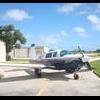IO360 Start Procedure
-
Members Online
- jwarren2
- MB65E
- acekng1
- amillet
- Pinecone
- Fly Boomer
- DanM20C
- Igor_U
- hammdo
- mluvara
- Ron McBride
- Joshua Blackh4t
- Robm
- Bolter
- 0TreeLemur
- jsclafani
- Guy123
- Quantum Blueberry
- ta2too
- TCC
- M20F
- Guillaume
- cleland
- EricJ
- FlyingScot
- M20R
- N201MKTurbo
- bluehighwayflyer
- GeeBee
- jeansilva247
- Mooney in Oz
- Pasturepilot
- ProtoFly
- kaba
- Andy95W
- Ivan
- IvanP
- BaldEagle
- rahill
- eman1200
- aviatoreb
- Jimmyred
- Mikey30V
- jeff.reynoljm
- Ethan


Recommended Posts
Join the conversation
You can post now and register later. If you have an account, sign in now to post with your account.